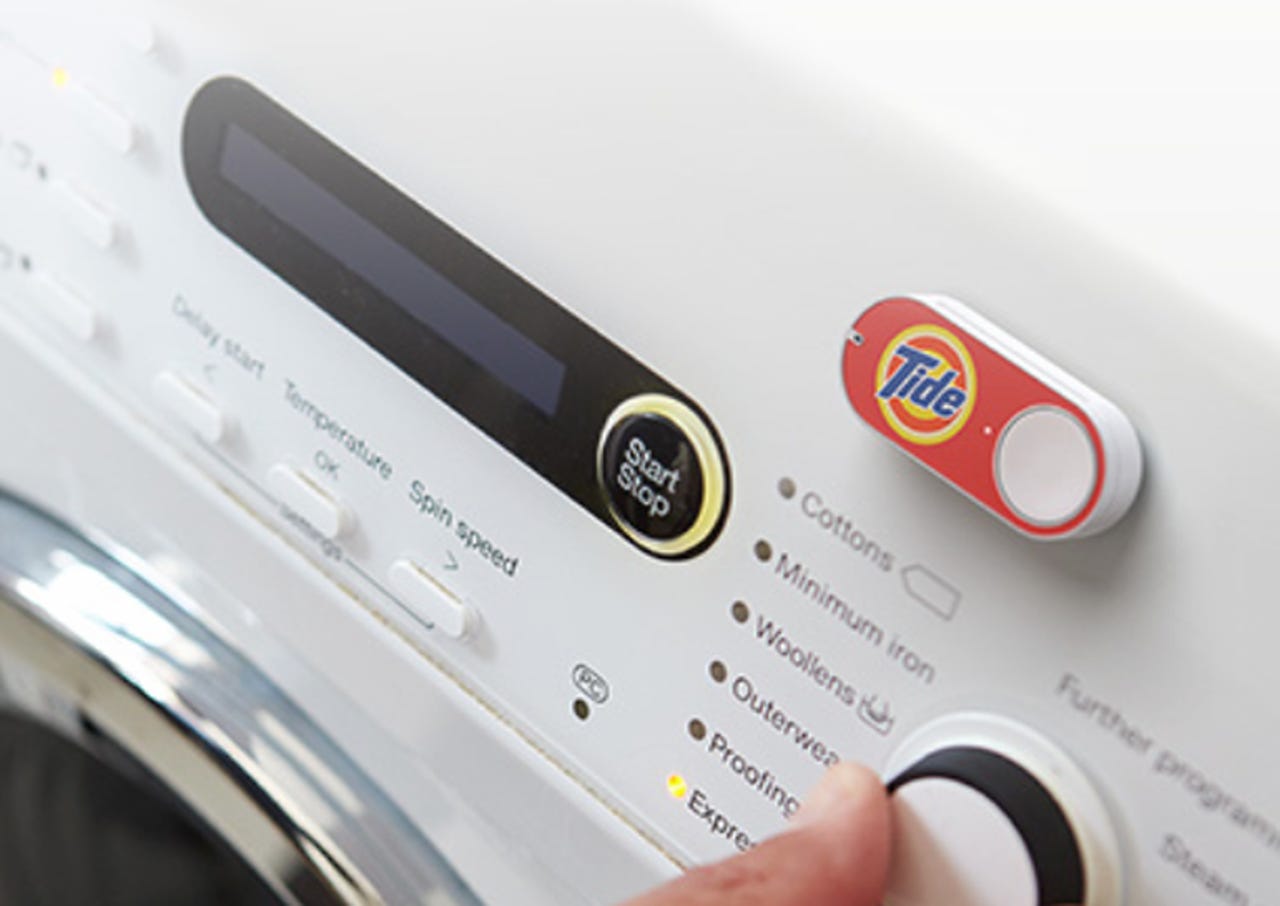Amazon's Dash Button: Could it really take off?


"Is this for real?"
That was the question on everyone's mind when, on the eve of April Fool's, Amazon introduced the Dash Button -- a one-click buying system designed to facilitate the seamless reordering of common household items.
"Yes, this is real," assured Kinley Pearsall, an Amazon spokesperson, when I confronted her with my skepticism.
I wasn't alone in thinking the Dash Button was an early gag to kick off April's annual day of mischief. Even with Amazon's reassurance, a product as bizarre and gimmicky as the Dash Button just begs for cynicism.
"I'm still dubious," said Peter Sheldon, VP and principal analyst for ecommerce with research firm Forrester.
Cynicism isn't necessarily a bad thing to have when nearing April 1. Fake product announcements are now customary, with everyone from tech companies to retail chains hoping to dupe unwitting consumers (and journalists) that failed to check their calendars.
But alas, the Dash Button is not a hoax -- which leaves us with another burning question: Could this really take off?
AR + VR
According to Pearsall, the Amazon spokesperson, the ecommerce giant is just trying to "make life a little easier" for its customers, and in a way, the Dash Button is kind of an experiment in convenience.
"Our focus right now is getting customers to use the service and give us feedback," she said.
Now, there are obvious limitations to Amazon's initial approach to translate internet shopping into a physical, in-home experience. But that doesn't mean the concept is entirely without merit.
First let's get refreshed on the basics. The Dash Button comes in the form of a plastic stick that consumers can place around their home. Each button is adorned with a product logo, and once connected to a home wifi network, they allow users to order from a range of household products, all supplied by Amazon.
The product range is limited at this point, to around 250 items, and consists mainly of non-perishables like laundry detergent, diapers, coffee and paper towels. For now, the Dash Button service is open on an invitation basis, and only to Amazon Prime customers.
According to Forrester's Sheldon, a few tweaks to the execution of the Dash Button service could help it avoid the fate of becoming just another Amazon flap. His first concern is with the service's limited category of products, especially considering the universe of consumable SKUs sold by Amazon.
Instead of pre-branding the buttons, Sheldon said the Dash Buttons would have more potential if they were generic and configurable, with each button given a unique ID that the customer could then assign to any SKU on Amazon.
"That way I can put the buttons on the shelves of my hall cupboard next to where my toilet roll lives, but with the ability to link it to 'my favorite' toilet roll, not restricting me to just the toilet roll Amazon thinks I should have," he said.
Furthermore, Sheldon said auto ordering seems overkill.
"I think a better use is to auto-add the item to a Dash Button wishlist, so that at the end of each week I can see all the things I need to re-order together then click 'buy'," he said. "For one, this approach would be more profitable for Amazon, as they could consolidate multiple orders into a single shipment."
Featured
With all that said, however, there is one very important component to the Dash Button service worth keeping in mind: The connection to the Internet of Things. It's through that gateway that Dash Buttons could make enough sense to survive, in one form or another.
Behind the launch of Dash Buttons is something called the Dash Replenishment Service (DRS). It's the cloud service that powers the Dash Button, and Amazon hopes to build right into household gadgets.
The DRS can be integrated with devices in two ways. Device makers can either build a physical one-click button into their hardware to reorder products, or they can have the device monitor consumable usage so it can reorder products automatically. Just like the Dash Button, customers can select the product that will be reordered via the service.
For example, an automatic pet food dispenser made with built-in sensors can measure the amount of pet food remaining in its container and place an order before running out. Device makers can start using DRS with as few as 10 lines of code.
The DRS launched in limited beta on Tuesday, and so far there are four initial launch partners: Whirlpool, Brother, Brita, and Quirky.
Both the Dash Buttons and the DRS are part of Amazon's first step, albeit a slightly odd one, to tie ecommerce with smart home technology and the Internet of Things. It's a baby step for sure, but Amazon's intentions are clear: The company wants to own your wallet, and it plans to get deeper and deeper into the home to help make that happen.